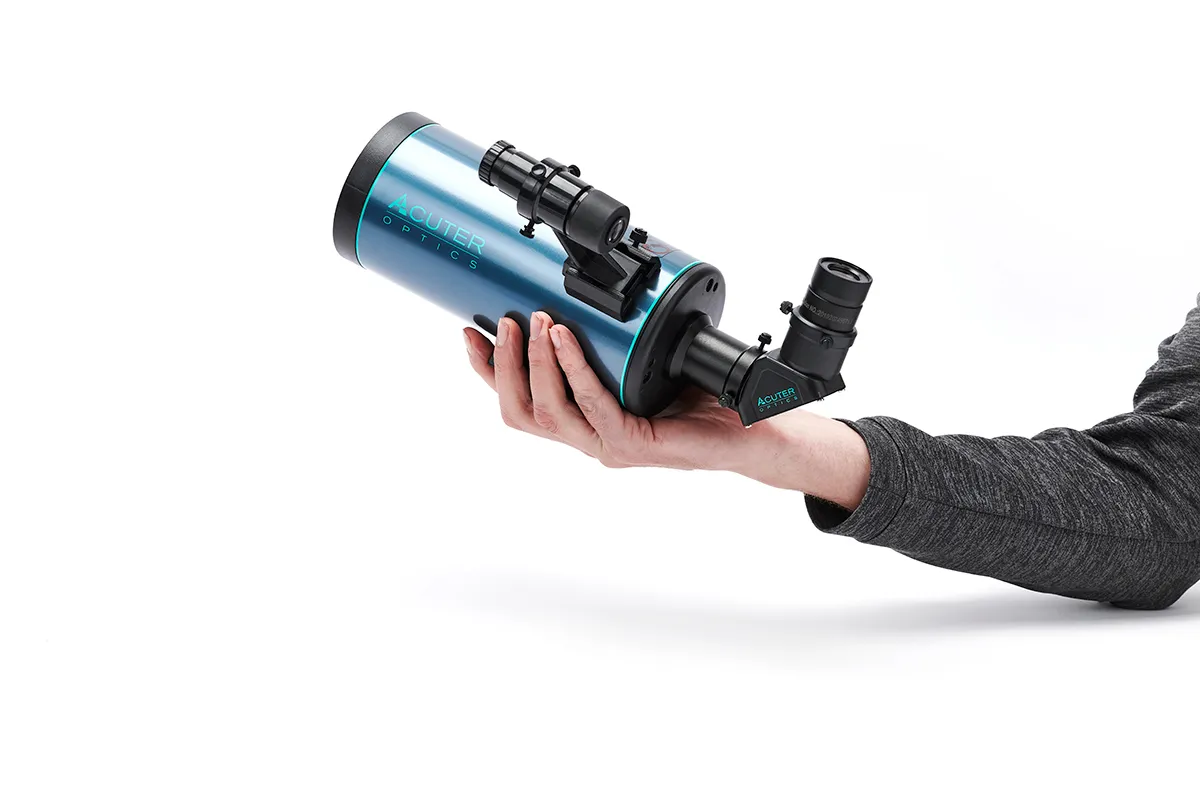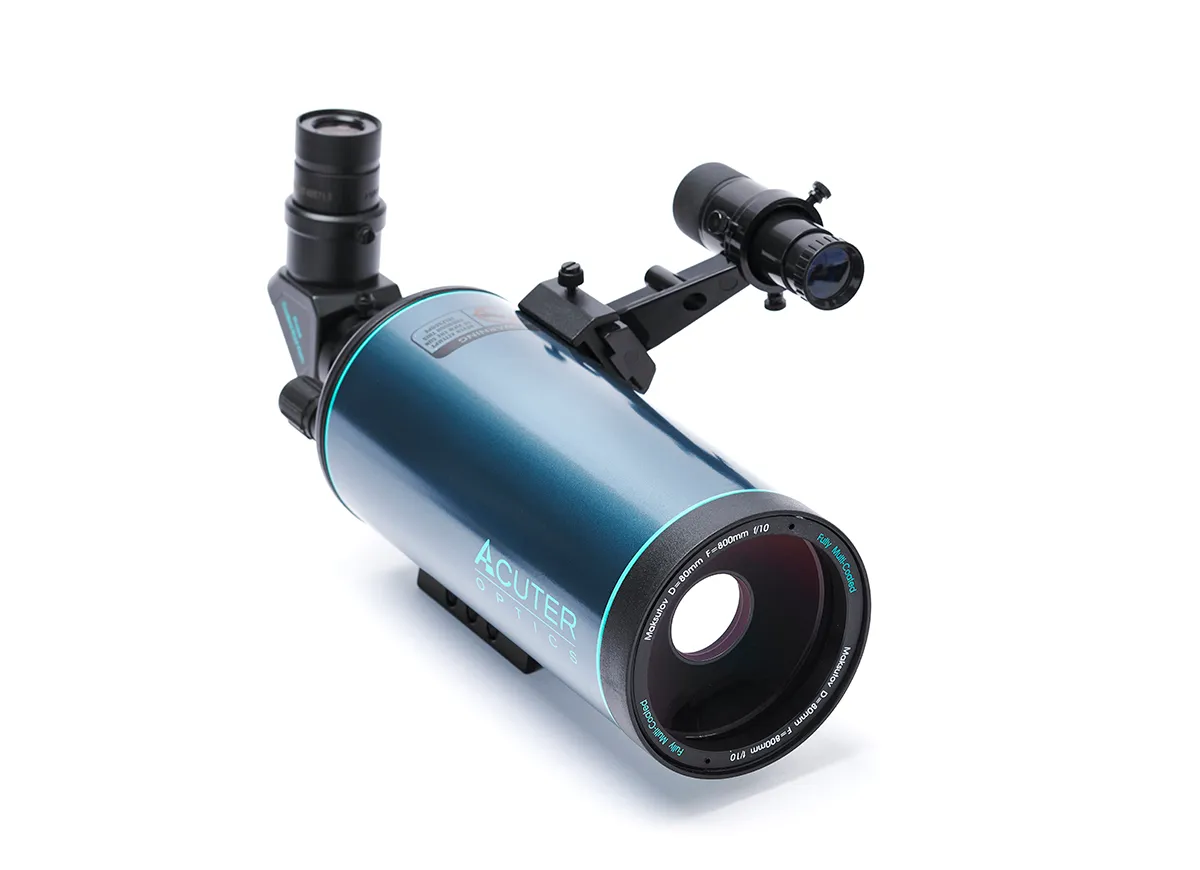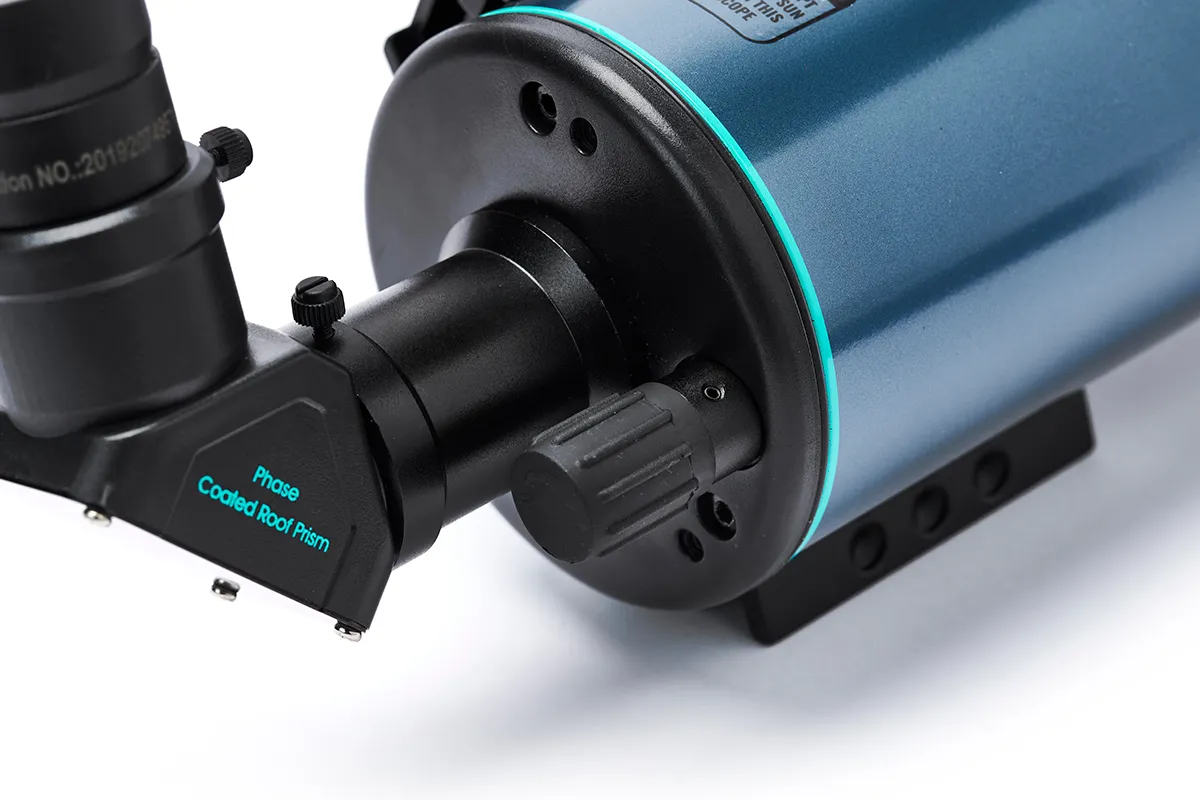Small is beautiful, or so the saying goes, and the Acuter Voyager MAK80 certainly fits the description, even when it is still in its gift box.
The MAK80 is a compact telescope and it is clearly well-suited for a wide range of activities, from nature and birdwatching to astronomy.
It's an 80mm diameter Maksutov-design telescope. Inside its tube there is a combination of lenses and mirrors that fold the path of incoming light into a compact size.
This telescope features in our list of the best telescopes for beginners and best budget telescopes

This means that the focal length of 800mm fits into a tube just 270mm long. The 80mm primary mirror, combined with the focal length, gives a focal ratio of f/10.
Long focal length systems like this are known as ‘slow’, a term left over from the days of photographic film; it means that it's well suited for viewing the planets, Moon and double stars.
Inside the aforementioned gift box, the telescope is supplied in a soft carry case, with an 8x 21mm finderscope and two eyepieces, 20mm and 10mm, which give magnifications of 40x and 80x respectively.
There is also a phase-coated 90˚ roof prism star diagonal and a smartphone holder.

The 8x 21mm finderscope turned out to be a surprise as we normally find smaller finderscopes are quite poor quality, but this one was an exception with better optics than expected.
It gave us a reasonably clear view of enough stars to help us find our targets. It is worth making or buying a dew shield, as the front lens is quite exposed to the elements.
In keeping with its function for both day and night use, the 90˚ diagonal presents an image that is the correct orientation so, unlike astronomical telescopes, the view will be upright and the image won’t be reversed.
It is also phase-coated to increase brightness and image contrast, which is especially helpful when you are viewing the brighter deep-sky objects that need as much light as possible to get to your eyes.

The Acuter Voyager MAK80 is an optical tube only, so you need to mount it and two options are available.
The first is the Vixen-style mounting bar for attaching to a telescope mount.
The second is the ¼-inch tripod thread on the underside of the bar for attaching to a standard photo tripod.
We used it in both setups on our tripod, while also using our Sky-Watcher Star Adventurer tracking mount to allow for longer, more comfortable viewing without the target drifting out of our field of view.
We observed Altair (Apha (α) Aquilae) with the 20mm eyepiece, and found that the star was pin-sharp across most of the field of view.
There was some slight degradation towards the edge with a little chromatic aberration (an effect usually seen as unwanted coloured rings around brighter objects), but this wasn’t excessive.

Turning to Saturn and Jupiter we swapped between the two eyepieces as we studied them.
With the 20mm, Jupiter’s disc had a hint of two belts and the four moons were well seen; when we upped the magnification using the 10mm eyepiece we got a better view of the giant planet's belts, with hints of subtle detail in the northern belt evident.
Saturn was naturally smaller, being further away, but Saturn's rings were easily seen with the 20mm eyepiece and we spotted at least two moons, while the higher magnification of the 10mm eyepiece gave a good hint of the two main rings, A and B, being separated by a thin line, the Cassini Division.
Although the Moon was full, it was fascinating to view its ray features, with crater Tycho and the main basins standing out.

A few nights later there was crisp detail in the craters on view, although with the 20mm there was a little hint of a bluish fringe to the edges of the Moon when slightly off-axis.
With darker, Moonless skies we were able to take a tour of the brighter objects from the Messier Catalogue, ranging from galaxy pair M81 and M82, to the Dumbbell Nebula, M27, and a faint Crab Nebula, M1.
Star clusters such as M39, M35, the Double Cluster and the Pleiades were visible, proving this little scope’s credentials as an all-rounder. Overall, we enjoyed our time with the MAK80.
MAK80's portability

The MAK80 is, by design, a compact lightweight system. It folds a light path (focal length) of 800mm into a tube that's only 270mm long including the eyepiece holder, with a diameter of only 100mm.
The whole thing weighs 1.8kg, and will sit in the palm of your hand without hurting your wrist.
All this makes it a portable system that just requires the addition of a tripod, for which there's a ¼-inch tripod thread included in the Vixen-style mounting bar.
This bar enables you to attach it to a mount, either a basic altaz tabletop variety or a star-tracking mount for prolonged use.
Being so light and compact makes it ideal for taking on holiday, as a spotting scope for daytime or night-time use.
The light carry case is ideal for this system, as it is compact and lightweight – perfect for taking on a plane or train as hand luggage.
Acuter Voyager MAK80: 5 best features
1
Accessories
The MAK80 comes with a 90˚, 1.25-inch star diagonal, making it easier to look through its two eyepieces – a 20mm and 10mm – which give magnifications of 40x and 80x respectively. It also has a smartphone adaptor that holds a phone in place with rubber bands; we used it to image the Moon.
2
Optics
The optics are a Maksutov design with a concave 80mm primary mirror and a convex front corrector lens that also houses the secondary mirror cell. The front corrector lens is fully multi-coated to reduce glare and allow better light transmission, while the secondary mirror is fully baffled to prevent stray light.
3
Finderscope
The finderscope gives a magnification of 8x and is constructed primarily of plastic. It can be easily aligned with the scope’s main view by using thumbscrews. The arm on its adaptor has an integrated sight hole for initial alignment.
4
Focuser
Focusing is carried out with a knob at the back of the telescope, close to the eyepiece end of the system and very convenient. Adjustments move the primary mirror back and forth, and we found the action smooth with little play.
5
Carry case and gift box
A soft carry case protects the Voyager when it's being transported or stored. It has several sections for accessories with room enough for a couple of extra eyepieces as well as all the supplied items.
Vital stats
- Price: £165
- Design: Maksutov-Cassegrain telescope
- Optics: 80mm (3.15-inch) primary mirror
- Focal length: 800mm, f/10
- Mounting: 45mm Vixen-style Sky-Watcher dovetail bar with standard ¼-inch tripod thread
- Extras: 8x 21mm finderscope; 20mm and 10mm 1.25-inch eyepieces; star diagonal; smartphone; adaptor; carry case; giftbox
- Weight: 1.8kg
- Supplier: Optical Vision Ltd
- Tel: 01359 244200
- www.opticalvision.co.uk
This review originally appeared in the December 2021 issue of BBC Sky at Night Magazine.
